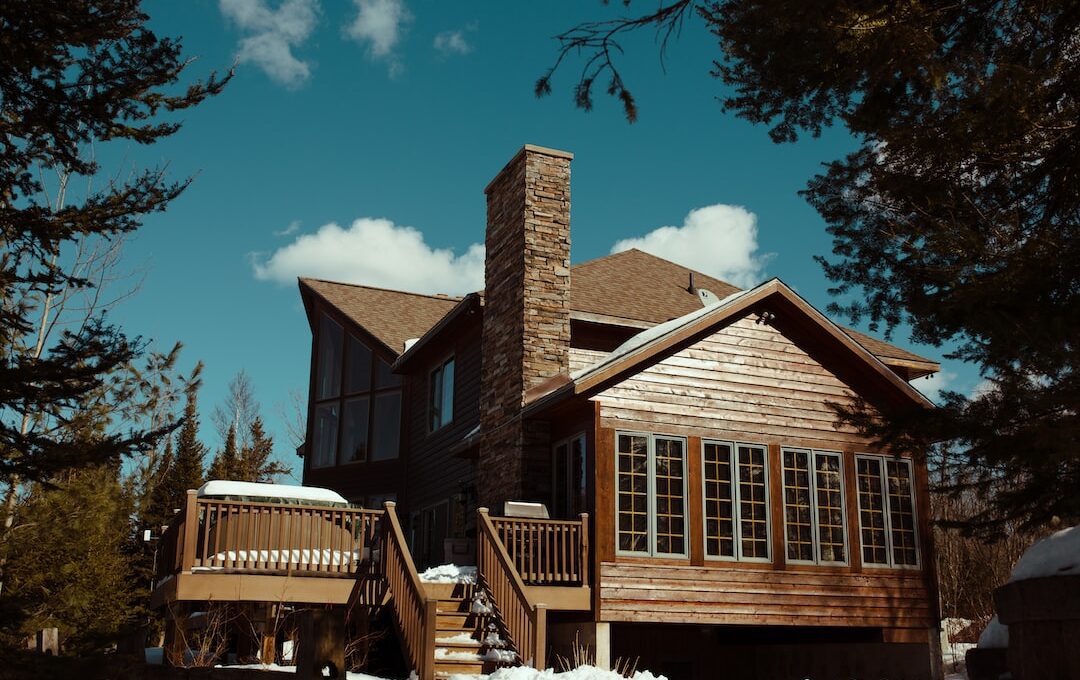Are you concerned about the weight of snow piling up on your deck? Wondering how much it can actually hold? Well, you’ve come to the right place! In this article, we will explore the important factors that determine the load capacity of your deck and provide you with valuable information to keep you and your loved ones safe.
Calculating the snow load on your deck is crucial in determining its capacity. We will guide you through the process, explaining how to measure and assess the weight of the snow. Understanding the factors that affect deck strength, such as the type of wood and support structure, is also essential in ensuring your deck can withstand heavy snowfall.
Additionally, we will discuss signs of overload to watch out for, as well as effective snow removal techniques to prevent damage. Should you need to reinforce your deck, we’ll provide you with practical tips to strengthen its load-bearing capabilities.
Safety is our top priority, so we’ll also outline important precautions to take when dealing with snow on your deck. By following our advice, you can enjoy the winter wonderland while keeping your deck safe and secure.
Quick Summary
- Factors that determine deck load capacity include construction plans and condition of materials
- Regular maintenance and prompt snow removal are important for deck stability and preventing excessive snow weight
- Signs of overload include sagging or bending deck boards, cracks or splitting in wood, and unstable or shifting deck structure
- Proper snow removal techniques, such as using non-abrasive tools and applying de-icer, are essential for safety and deck preservation
Understanding Deck Load Capacity
You’ll want to understand your deck’s load capacity before testing its ability to withstand heavy snow. Calculating the load bearing capacity of your deck is crucial to ensuring its stability and safety during the winter season.
To determine this, you’ll need to consider a few factors.
Firstly, you should consult your deck’s construction plans or consult a professional to find out the maximum weight your deck was designed to support. This information will give you a baseline for understanding how much snow your deck can handle.
Additionally, you need to assess the condition of your deck’s materials, such as the wood or composite boards, support beams, and connectors. Any signs of rot, decay, or damage can significantly weaken your deck’s load capacity, meaning it may not be able to support heavy snow loads.
Regular maintenance is vital for maintaining deck stability. Clearing off accumulated snow promptly can prevent excessive weight from putting stress on your deck’s structure. Use a broom or a plastic shovel to remove the snow gently, avoiding any harsh scraping that could damage the surface.
Also, keep in mind that heavy snow tends to accumulate in corners and on railings, so pay extra attention to these areas when clearing off the snow.
By calculating the load bearing capacity and maintaining deck stability, you can ensure your deck remains safe and sturdy during the snowy winter months. Remember, prioritizing safety is always the best choice when it comes to enjoying your deck year-round.
Calculating Snow Load
Calculate the maximum weight of snow your deck can bear by calculating the snow load. The snow load refers to the weight of snow that accumulates on your deck during a snowstorm. It’s important to understand your deck load capacity to ensure the safety of your structure.
To calculate the snow load, you need to consider a few factors. First, determine the ground snow load for your area. This information can usually be found in local building codes or obtained from your local building department.
Next, calculate the projected area of your deck that will be covered by snow. Measure the length and width of your deck and multiply them together to get the surface area.
Once you have these measurements, you can calculate the snow load by multiplying the ground snow load by the projected area of your deck. This will give you the maximum weight of snow that your deck can safely hold.
It’s crucial to stay within the deck load capacity to prevent any damage or collapse. If you’re unsure about performing these calculations yourself, it’s recommended to consult a structural engineer or a professional deck builder who can assess your deck’s load capacity and provide you with the necessary guidance.
Remember, safety should always be your top priority when it comes to your deck, so make sure to calculate the snow load and stay within the recommended limits to ensure the structural integrity of your deck.
Factors Affecting Deck Strength
Consider the various elements that can influence the strength of your deck. When it comes to calculating weight and snow load capacity, there are several factors that you need to take into account to ensure the safety of your deck.
Here are some key points to keep in mind:
-
Material: The type of material your deck is made of can greatly affect its strength. Different materials have different load capacities, so it’s important to choose one that can withstand heavy snow loads.
-
Design: The design of your deck can also impact its strength. A well-designed deck with proper support and bracing will be able to handle more weight than a poorly designed one.
-
Age: The age of your deck is another factor to consider. Over time, decks can weaken due to wear and tear, which can reduce their load capacity. Regular maintenance and inspections are essential to ensure the structural integrity of your deck.
-
Climate: The climate in your area is also important to consider. If you live in an area with heavy snowfall, you’ll need a deck that is capable of handling the weight of accumulated snow.
By considering these factors and calculating the weight and snow load capacity of your deck, you can ensure that it is strong enough to withstand the elements and provide a safe outdoor space for you and your family.
Signs of Overload
If your deck is experiencing sagging or bending deck boards, cracks or splitting in the wood, or an unstable or shifting deck structure, these are signs that your deck may be overloaded.
Sagging or bending deck boards indicate that the weight being placed on the deck is too much for it to bear, causing it to weaken and warp.
Cracks or splitting in the wood can also occur when the deck is under excessive pressure, leading to potential safety hazards.
An unstable or shifting deck structure is another clear indicator that the deck is overloaded and in need of immediate attention to prevent further damage.
Sagging or Bending Deck Boards
You’ll be amazed at how much snow your deck can handle without the deck boards sagging or bending.
When it comes to preventing snow accumulation on your deck, there are a few things you should keep in mind. First, make sure to clear off any snow that has already accumulated. This will help to reduce the overall load on your deck.
Second, consider the snow load calculations for your area. Understanding the weight of snow in your region can help you determine how much your deck can safely hold.
Finally, it’s important to regularly inspect your deck for signs of sagging or bending. If you notice any issues, it’s best to address them promptly to ensure the safety of your deck and all who use it.
Stay safe and enjoy your winter wonderland!
Cracks or Splitting in the Wood
When winter hits, the wood on your deck may start to crack and split, resembling the weathered branches of an ancient tree. This can be a cause for concern, especially if you live in an area with heavy snowfall. Cracks and splitting in the wood can weaken the overall structure of your deck, potentially leading to safety hazards. To understand the impact of snow accumulation on your deck, take a look at the table below:
| Snow Accumulation (inches) | Safe Load Capacity (lbs) | Potential Risks |
|---|---|---|
| 0-6 | 40-60 | Minimal |
| 6-12 | 60-80 | Moderate |
| 12+ | 80+ | High |
As you can see, the more snow accumulates on your deck, the higher the risk of exceeding the safe load capacity. This can result in sagging or even collapse, especially if your deck already has cracks in the foundation. To ensure your safety, it’s important to regularly inspect your deck for any signs of cracking or splitting and take appropriate measures to address them.
Unstable or Shifting Deck Structure
If you’ve noticed cracks or splitting in the wood of your deck, it’s crucial to address those issues promptly. However, even if you’ve successfully dealt with those problems, there’s another aspect of deck safety that you shouldn’t overlook: the stability of the deck structure itself.
An unstable or shifting deck structure can pose a significant risk, especially when it comes to heavy snow loads. Snow can add a substantial amount of weight to your deck, and if the foundation or structure is unstable, it may not be able to support that additional load.
Ensuring the structural stability of your deck is essential in determining how much snow it can safely hold. If you’re uncertain about the stability of your deck, it’s advisable to consult a professional to assess and reinforce the foundation as needed.
Remember, safety should always be your top priority when it comes to enjoying your deck in winter.
Is it Important for Composite Decking to Withstand Heavy Snow?
When considering composite decking, one crucial aspect is its resilience against heavy snowfall. Ensuring that composite decking can withstand the weight and pressure is vital for its durability. Additionally, another factor to consider is keeping composite decking cool, as excessive heat can impact its overall performance and lifespan. So, both snow resistance and heat management are significant when choosing composite decking.
Snow Removal Techniques
To effectively clear snow from your deck, it’s essential to employ proper snow removal techniques. Not only will this ensure the safety of your deck, but it’ll also prevent any potential damage to the structure. Here are some important tips to keep in mind:
-
Use the right snow removal equipment: Invest in a good quality snow shovel or snow blower specifically designed for removing snow from decks. This’ll make the task easier and more efficient, reducing the risk of accidents.
-
Clear the snow regularly: Don’t let the snow accumulate on your deck for too long. Regularly remove the snow after each snowfall to prevent excessive weight and stress on the deck.
-
Shovel in the right direction: Always shovel the snow in the direction away from the deck’s edges. This’ll prevent the snow from falling back onto the deck and causing additional weight.
-
Prevent ice buildup: Apply a de-icer or salt to your deck to prevent ice from forming. This’ll make the snow removal process easier and safer.
-
Be cautious of slippery surfaces: Even with proper snow removal techniques, your deck may still be slippery. Make sure to use anti-slip mats or traction aids to provide a safer surface for walking.
By following these snow removal techniques, you can ensure the safety of your deck and enjoy a worry-free winter season.
Reinforcing Your Deck
If you’re concerned about the strength and stability of your deck, there are a few key points to consider.
First, adding support beams or posts can help reinforce the structure and distribute the weight more evenly.
Second, installing metal brackets or connectors can provide additional stability and prevent the deck from shifting or sagging.
Lastly, it’s always a good idea to consult a professional for structural upgrades to ensure that your deck is safe and able to withstand any potential stress or load.
Adding Support Beams or Posts
Installing additional support beams or posts can greatly increase the load-bearing capacity of your deck, ensuring it can handle even the heaviest snowfall. To reinforce your deck, consider adding diagonal bracing and using pressure treated lumber for added strength and durability.
Diagonal bracing helps distribute the weight of the snow more evenly across the deck, reducing the risk of collapse. When adding support beams or posts, make sure they’re properly secured and anchored to the ground to provide maximum stability.
Pressure treated lumber is resistant to rot and decay, making it ideal for outdoor structures like decks. By incorporating these measures, you can have peace of mind knowing that your deck is strong enough to withstand heavy snow loads and provide a safe outdoor space for you and your family.
Installing Metal Brackets or Connectors
For added strength and stability, you’ll want to consider using metal brackets or connectors when reinforcing your deck. Installing deck fasteners and choosing the right deck materials are crucial steps in ensuring the safety of your deck. Metal brackets or connectors provide additional support by connecting the various components of your deck, such as the beams and posts. They help distribute the weight evenly, preventing any weak points that could potentially lead to collapse. By using metal brackets or connectors, you can increase the load capacity of your deck and ensure it can withstand the weight of heavy snow. To help you understand the importance of metal brackets or connectors, here is a table comparing different types of brackets and their load capacities:
| Bracket Type | Load Capacity |
|---|---|
| Type A | 500 lbs |
| Type B | 750 lbs |
| Type C | 1000 lbs |
| Type D | 1500 lbs |
| Type E | 2000 lbs |
By choosing the right type of bracket and installing them correctly, you can enhance the safety and durability of your deck, making it capable of withstanding heavy snow loads.
Consulting a Professional for Structural Upgrades
Consulting a professional for structural upgrades can greatly enhance the overall safety and longevity of your outdoor living space. When it comes to the weight of snow on your deck, it’s essential to ensure that it can withstand the load without compromising its integrity.
Structural reinforcement is crucial in preventing any potential hazards caused by heavy snow accumulation. By consulting a professional, you can have a thorough assessment of your deck’s current condition and receive expert advice on necessary upgrades.
A professional inspection will identify weak points and recommend the appropriate measures to reinforce your deck’s structure. This may include adding additional supports, reinforcing beams, or even replacing the decking material.
Trusting a professional ensures that your deck can withstand the weight of snow and provides a safe and durable outdoor space for years to come.
Safety Precautions
One important aspect to consider when it comes to ensuring the safety of your deck is taking proper precautions. This includes being mindful of snow removal equipment and preventing ice buildup. By following these safety measures, you can protect yourself, your family, and your deck from potential accidents or damage caused by heavy snow.
To prevent ice buildup, it is crucial to remove any snow from your deck as soon as possible. This can be done using snow shovels or snow blowers, but it is important to use proper techniques to avoid damaging the deck’s surface. Additionally, applying a de-icing agent can help prevent ice from forming and reduce the risk of slips and falls.
When it comes to snow removal equipment, it is essential to use the right tools for the job. Snow shovels with non-abrasive blades or plastic edges are recommended to prevent scratching or damaging the deck’s surface. Snow blowers can also be used, but make sure to adjust the height to avoid hitting the deck.
By taking these precautions, you can ensure the safety and longevity of your deck during snowy weather. Remember to always prioritize safety and consult professionals if you have any concerns about the structural integrity of your deck. Stay safe and enjoy your winter wonderland!
| Precautionary Measures | Description | Benefits | ||||
|---|---|---|---|---|---|---|
| Remove snow promptly | Remove snow from your deck as soon as possible to prevent ice buildup. | Prevents slips and falls | ||||
| Use non-abrasive snow removal tools | Choose snow shovels with non-abrasive blades or plastic edges to avoid damaging the deck’s surface. | Protects the deck from scratches | ||||
| Apply de-icing agent | Applying a de-icing agent helps prevent ice formation and reduces the risk of accidents. | Minimizes the risk of slips and falls | ||||
| Adjust snow blower height | When using a snow blower, adjust the height to avoid hitting the deck and causing damage. | Prevents damage to the deck | Regularly inspect and replace worn-out blades | Regular inspection and replacement of worn-out blades on a snow blower ensures efficient and safe operation. | Increases the lifespan of the snow blower and prevents accidents. |
Frequently Asked Questions
Can I leave snow on my deck all winter without worrying about it collapsing?
You should not leave snow on your deck all winter without worrying about it collapsing. It is important to consider the deck snow load capacity to ensure the safety of your deck.
Are there any specific deck materials that are better suited for heavy snow loads?
When comparing different deck materials for heavy snow loads, it’s important to consider their strength and durability. Some materials, like pressure-treated lumber or steel, may be better suited for withstanding heavy snow loads than others. Make sure to calculate the snow load to ensure safety.
How often should I check the load capacity of my deck during the winter season?
During the winter season, it is important to regularly check the load capacity of your deck to ensure snow load safety. Regular inspections will help identify any potential issues and prevent accidents.
Can I use a snow blower or shovel to remove snow from my deck without causing damage?
When removing snow from your deck, it’s generally safe to use a snow blower, but be cautious of the blower’s power. Using shovels can be effective, but be careful not to damage the wood.
Are there any legal requirements or regulations regarding deck load capacity in my area?
There may be legal requirements and safety regulations in your area regarding deck load capacity. It’s important to check with your local building codes or authorities to ensure you meet the necessary standards for safety.
Conclusion
In conclusion, understanding the load capacity of your deck is crucial to ensure its durability and safety during snowfall. By calculating the snow load and considering factors that affect deck strength, you can prevent potential damage. It is also important to be aware of signs of overload. Additionally, using snow removal techniques and reinforcing your deck when necessary can further protect it. Remember to prioritize safety by following proper precautions when dealing with snow on your deck.
Stay informed and take appropriate measures to keep your deck in top condition.









